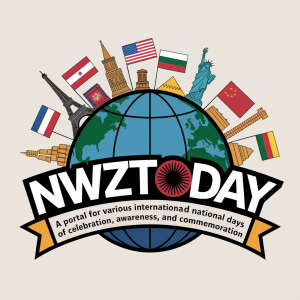The Power of a Semicolon: More than Just a Punctuation Mark
Every year on April 16, the world comes together to celebrate World Semicolon Day. While a semicolon might seem like just another punctuation mark, it holds a profound meaning for many. This day is not merely about grammar or writing; it’s about hope, resilience, and the stories that continue when they could have ended.
Why April 16?
World Semicolon Day is observed on April 16 to honor those who have struggled with mental health issues, survived suicide attempts, or lost loved ones to suicide. The date serves as a reminder that, like a semicolon in literature, life’s story doesn’t have to end—it can continue. The semicolon has become a global symbol of hope and solidarity, reminding people that their lives are worth living.
The History Behind the Movement
The semicolon movement began in 2013, thanks to Project Semicolon, an initiative founded by Amy Bleuel. Amy started this movement to support individuals battling depression, anxiety, and other mental health challenges. She used the semicolon as a metaphor for life—just as writers use a semicolon to connect two related ideas, individuals can choose to continue their life stories despite difficulties.
Though Amy sadly passed away in 2017, her legacy lives on. World Semicolon Day is a testament to her vision and the resilience of countless others who have found strength in her message.
How is World Semicolon Day Celebrated?
People around the globe observe World Semicolon Day in various meaningful ways:
- Semicolon Tattoos: Many individuals get semicolon tattoos as a permanent reminder of their strength and perseverance.
- Mental Health Workshops: Organizations host events and discussions to spread awareness about mental health and suicide prevention.
- Sharing Stories: Social media platforms light up with personal stories, messages of hope, and solidarity using hashtags like #SemicolonDay and #YourStoryIsntOver.
- Fundraisers: Communities organize charity runs, art exhibitions, and other events to support mental health organizations.
Fun Facts About the Semicolon
- The semicolon was first introduced in 1494 by Italian printer Aldus Manutius.
- In literature, semicolons are often used to create dramatic pauses or connect two independent but related ideas.
- Some people affectionately call the semicolon the “supercomma.”
- Project Semicolon’s tagline—”Your story isn’t over”—has inspired millions worldwide.
A Call to Action
World Semicolon Day is not just a day; it’s a movement. It’s a chance to inspire, educate, and connect. Whether you’re battling your own mental health challenges or supporting someone who is, remember that you’re not alone.
Here’s how you can make a difference:
- Check in on your friends and loved ones. A simple conversation can mean the world.
- Share your story or a message of hope on social media.
- Donate to mental health organizations or volunteer your time to support their efforts.
- Take care of your own mental health by practicing self-care and seeking help when needed.
On April 16, 2025, let’s come together to celebrate life, spread awareness, and remind everyone that their story isn’t over. Because like a semicolon, we all have the power to continue writing our narratives, no matter the challenges we face.









